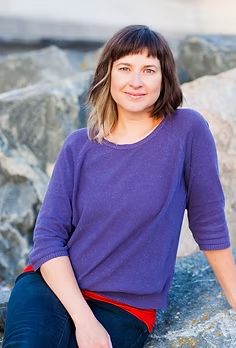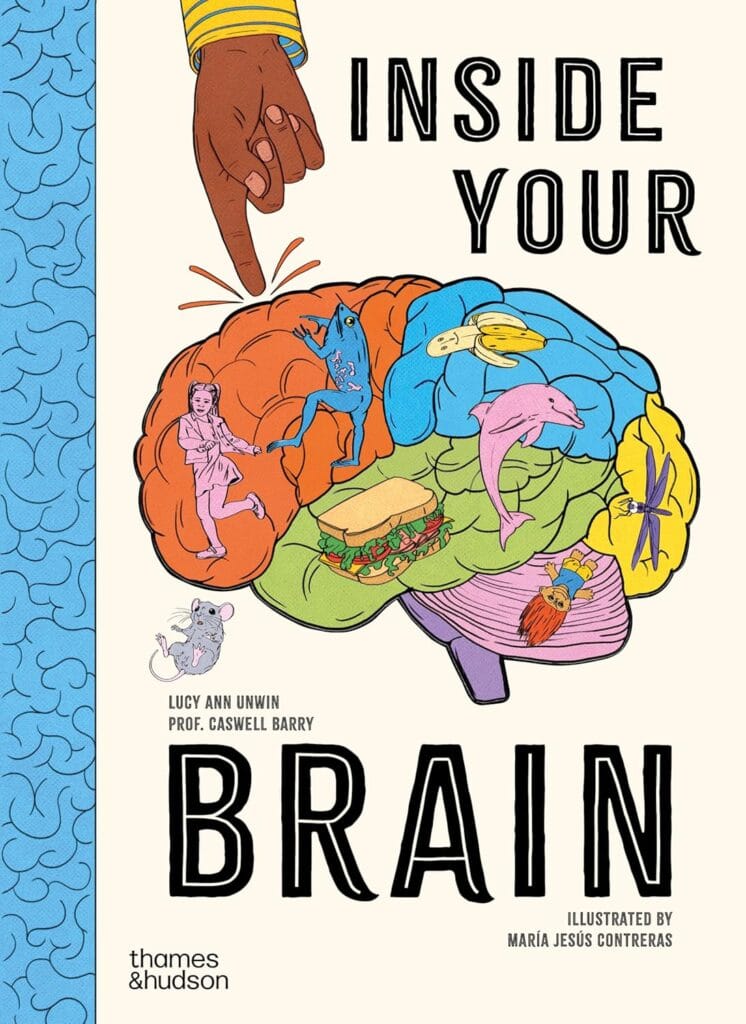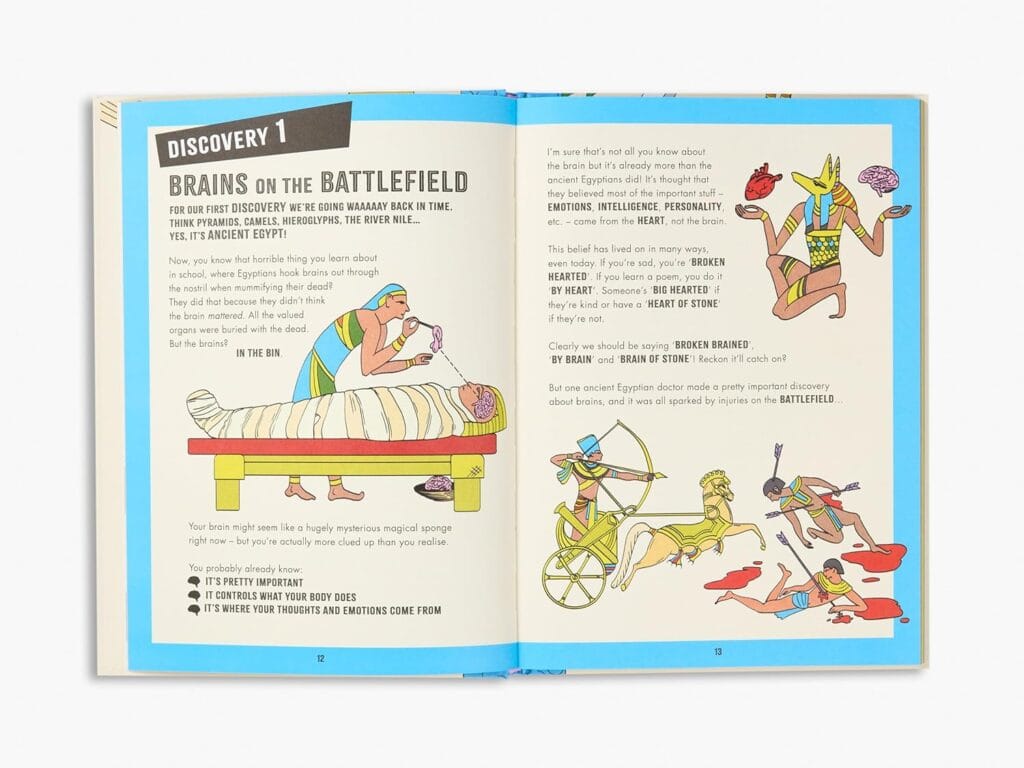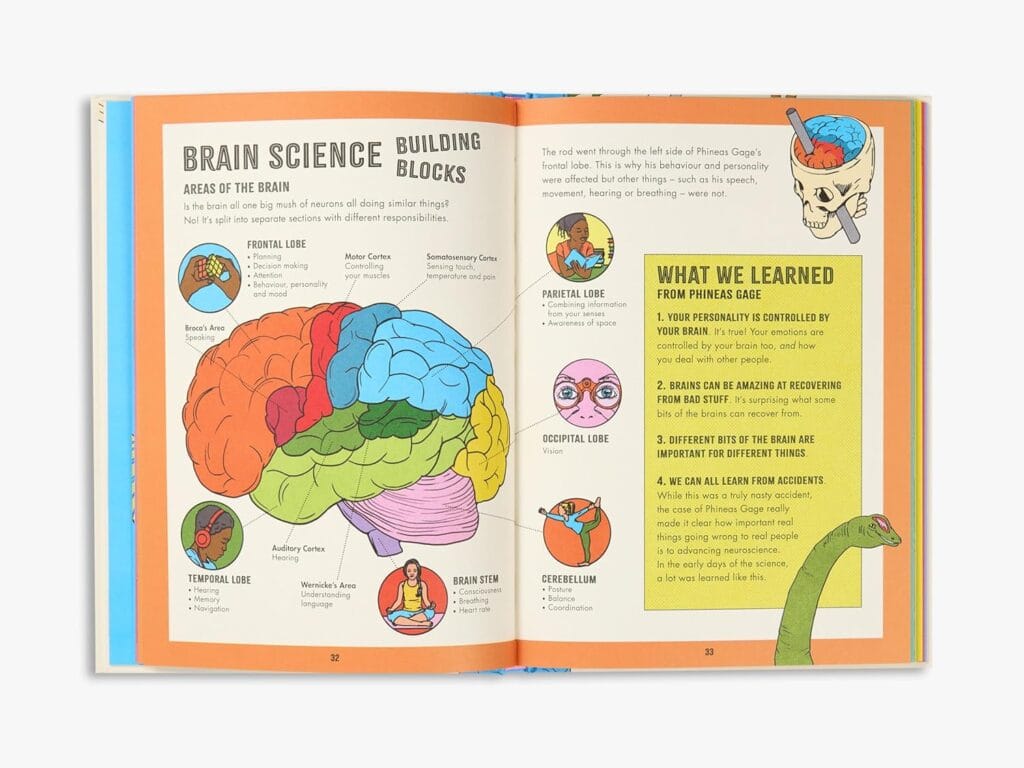Today we welcome children’s author Lucy Unwin into The Reading Realm to talk about her brand-new book INSIDE YOUR BRAIN, which is co-written with Professor Caswell Barry and illustrated by María Jesús Contreras…

It was an utter revelation writing my first non-fiction book, Inside Your Brain. Firstly, I write fiction in a dreamlike state and writing non-fiction requires you to be wide awake and totally switched on: then to be part of such a team; both with my wonderful co-author, Professor Caswell Barry, and the amazing design crew; and then the actual revelations! The weird and wonderful things I learnt about our brains: SO fascinating! I was floored daily. So, I thought I’d share my favourite finds here…

1. How resilient our brains are!
I’m used to feeling like my head is dangerously fragile, but I was amazed to see the things that — while utterly horrendous and life changing — are still survivable. Like 19th century railway worker Phineas Gage who lived to tell the tale after a metre-long metal rod exploded through his skull; although he did end up with a changed personality!
2. It’s made me think about the true core of who I am!
That may sound unnecessarily profound, but Professor Barry poses a question on page 57 that I can’t stop thinking about. We learn of a patient who had the two halves of his brain severed, and the halves disagreed with each other: he would pull his trousers up with one hand and down with the other. Caswell asks if the body containing the two separated brain halves was still one person, or actually two? I still haven’t got my (whole) brain around that one.

3. How unreliable our memories are.
Memories are like channels of water in the sand: the more water runs through them, the more ingrained they are — so each time you remember something, the memory gets stronger. But you can also misremember things too, and if you repeatedly misremember things, that FAKE memory can take hold.
4. Some brilliant brains from history.
We feature a ‘Neuroscience Hall of Fame’ and I was very inspired by some of the stories. Like Rita Levi-Montalcini who was so dedicated to neuroscience she continued her work in secret during WW2 — despite being persecuted as a Jew — and went on to win a Nobel Prize. Or Brenda Milner, who was still teaching us about the brain into her 100s!

And a practical one to end…
5. Navigating facts.
In Chapter 9 we learn about special brain cells that help you navigate the world. It’s something our brains are very good at, and can actually be used to help you remember things. If you need to learn a list of objects then imagine them in familiar places, and when you navigate from item to item in your mind it will help you recall them. ‘Mind Palaces’ have been used since ancient Roman times, and it was great to understand the science of how they work.
Inside Your Brain chronicles 10 big accidents and experiments from the Egyptians to modern labs, and each one was a revelation to me — I hope they are to young readers too!

